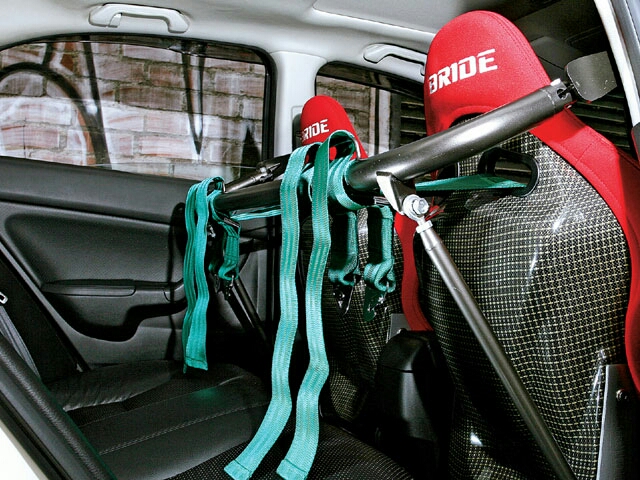Just minutes ago, I responded to a Gridlife participant's email of why he thinks he should be able to run his high-quality harness bar, 5 point harness, and head and neck restraint without a rollbar. I commend him on wanting a head and neck restraint device, certainly, but this is a weird and slippery slope. Below is some of what I sent him . This is why I don't want you to have a harness without a QUALITY rollbar or rollcage.
The current trend in HPDE safety is either "OEM'' safety (3 point belts), or "rollbar/rollcage and 5+ point harnesses" safetly. That leaves harness bars in a no-zone. The roof can come down, and you are pointed straight up and down between that fancy 5 or 6 point harness. These two things don't mix well. (Those harness bars are known to bend/distort/fail in various ways as well)
I totally see where you harness bar guys are coming from...yeah, we dont see many rollovers, you want to use a Hans/etc device...but here is a story......
Way back in 2005, we (Chris, Luke, and I) were hosting our 2nd ever track day, West michigan honda meet 5! It was super fun....what a great weekend! We were on top of the world. Second to last session, this CRX in advanced group goes out.........after bleeding his brakes. Turbo d16 engine, big brakes, etc, and it had been running pretty fast all weekend. I was behind him as I rounded turn 1, and he was in the blend line entering the track.
CRX dude hauls ass down the turn 2-turn 3 straight...and I see brake lights. I also see zero slowing down. His pedal had gone to the floor . Not good. CRX dude's Russell's Speed Bleeders had been not-tightened enough or something, and that end-of-the-day "I got this" took over. He had never pushed the pedal down in grid, in the blend line entering the track, etc. A FREAK coincidence. Straight through the giant sandtrap he went, and it didn't do much.
I saw that car go , 80 MPH or so, through the sand trap at turn 3, and LEAVE the track area, through a fence. I saw him hit the berm back there, and leave my sight, as I rounded 3, when he was aimed straight down , rear bumper aiming straight up, end-going-over-end. About the time I went through the kink at 4 it dawned on me that that dude was probably dead, because he had a harness bar and no rollbar (and crxs are pieces of shit without rollcages... trust me...they crunch easily!)
Thankfully, he wasn't dead though, because, as the story goes from him (this is 11+ years ago and I remember it like yesterday)....
"I was looking straight at the ground after I hit the berm head on, and thought "this roof is going to come down on me", and i'm going to die. so I unclipped the harness and tried to lay to the side" ..
I'm not making this up. Still give me shivers over a decade later.....
The roof of that car was at the top of the doors.
So...... this stuff means something to me. A lot actually. I don't want to lose someone, ever, because this is a silly track event, and we all have a lot of people that love us.
Also, I realize I want you to wear a Head and Neck, badly.... so I also want you to have a rollbar.
Your car will pass tech if you have an OEM seatbelt in it. Tell me or the other tech inspector "I'll just use the oem belt"...
There are no free lunches in track days and racing... rollbars and cages make things safer, but they make cars harder to live with and more expensive. I realize this . I don't think ANY modern cars would crush like that CRX..but it still is a line we need to draw....




















